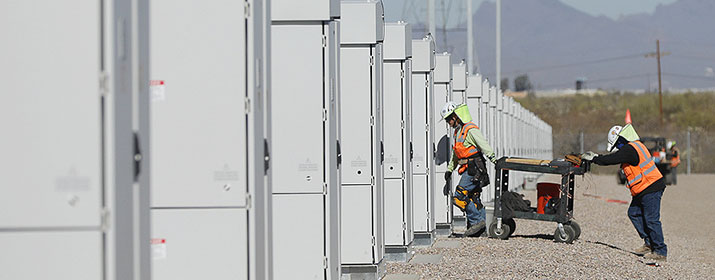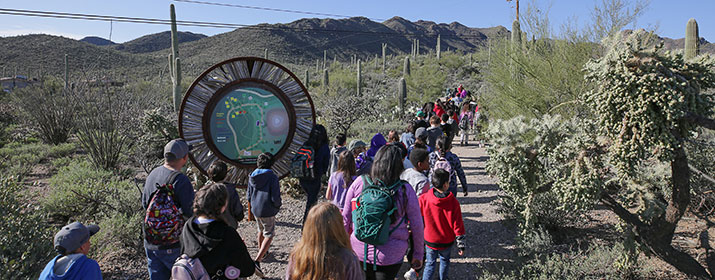
TEP’s latest investment in new energy technology is helping us weather the summer heat by making greater use of low-cost renewable power.
The 200-megawatt Roadrunner Reserve battery energy storage system has been used daily since it came online in July. The southeast-side system supports reliability citywide, including during record peak usage on Aug. 6.
By using stored energy from the batteries on that day and others, TEP was able to avoid purchasing energy from the market, which costs more during on-peak periods in hot weather.
“The Roadrunner batteries improved efficiency on TEP’s record peak day by helping the company avoid buying electricity during peak hours, when demand and prices were highest,” said Justin Shields, TEP’s Manager of Real Time Market Operations. “We’re happy with the way it’s supporting our efforts to provide low-cost energy to our community.”
Battery systems help TEP and other utilities make better use of wind and solar resources, which are most productive during off-peak periods. We typically charge the Roadrunner Reserve batteries in the late morning when solar energy is abundant and grid usage is relatively low. We then deploy that reserved energy in the late afternoon and early evening, when energy use typically peaks.
Roadrunner Reserve can store 800 megawatt-hours (MWh) – enough energy to power up to 42,000 homes for four hours. It’s now the largest storage resource on our local energy grid, eclipsing the 60 MWh battery system that’s fed by the 100 megawatt (MW) Wilmot Energy Center solar array in southeast Tucson.
A 200-megawatt expansion of Roadrunner Reserve is under construction and is expected to begin operations next year. Other battery storage plus solar arrays are in development, including an expansion of the Wilmot Energy Center, coming online next year, and Winchester Solar, deploying in 2027.
Read more about Roadrunner Reserve and battery storage.
See a fact sheet about TEP’s investments in resilience and reliability.






